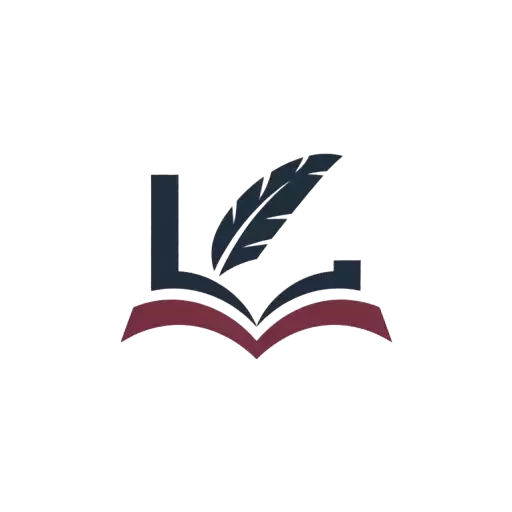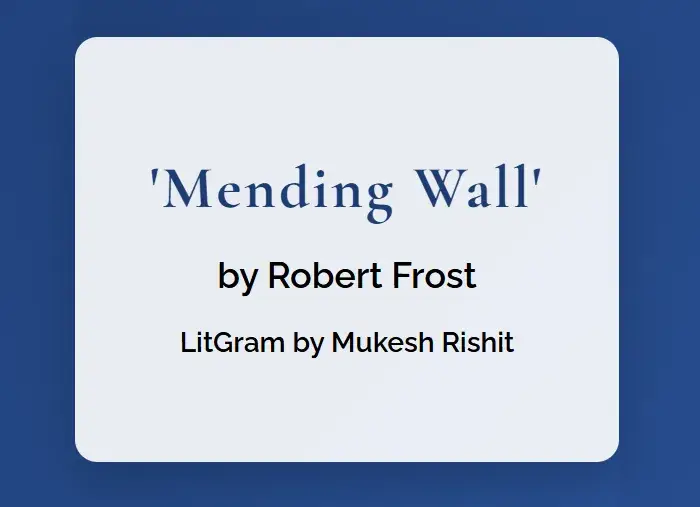Robert Frost’s “Mending Wall,” which came out in 1914, is one of the most studied and cherished poems in American literature. This story, which seems straightforward at first glance, talks about two neighbors fixing a stone wall between their lands. But it goes deeper looking at the ins and outs of how people can stick to old ways, and set borders. In this blog post, we’ll dig into the many meanings hidden in “Mending Wall.” We’ll look at its main ideas, what different things in it stand for, and why it still matters in our world today.
The Poem’s Narrative
“Mending Wall” opens with the speaker describing an annual spring ritual: he and his neighbor walk along the stone wall that separates their properties, repairing any damage that has occurred over the winter. The speaker questions the necessity of this tradition, noting that nature itself seems to resist the wall:
“Something there is that doesn’t love a wall,
That sends the frozen-ground-swell under it,
And spills the upper boulders in the sun;”
Despite the speaker’s skepticism, his neighbor insists on maintaining the wall, repeating the adage, “Good fences make good neighbors.” This contrast between the speaker’s questioning attitude and his neighbor’s adherence to tradition forms the central tension of the poem.
Themes and Symbolism
1. The Nature of Boundaries
The wall itself serves as a powerful symbol for the boundaries we create in our lives. Frost invites us to consider the purpose and value of these divisions:
- Are they necessary for maintaining order and respect?
- Do they hinder genuine connection and understanding?
- How do we decide which boundaries to keep and which to dismantle?
The poem doesn’t provide clear answers but encourages readers to ponder these questions in their own lives.
2. Tradition vs. Progress
The neighbor’s insistence on maintaining the wall represents a adherence to tradition, while the speaker’s questioning attitude symbolizes a more progressive mindset. This conflict reflects broader societal tensions between preserving established customs and embracing change.
Frost doesn’t definitively side with either perspective, instead presenting both views for the reader to consider:
“He will not go behind his father’s saying,
And he likes having thought of it so well
He says again, ‘Good fences make good neighbors.’”
3. Communication and Misunderstanding
The poem highlights the challenges of effective communication. Despite their annual interaction, the speaker and his neighbor seem to talk past each other rather than truly engaging in dialogue. This failure to connect mirrors many real-world relationships where surface-level interactions mask deeper misunderstandings or disagreements.
Read this too: The Road Not Taken by Robert Frost: A Comprehensive Analysis
4. Man vs. Nature
The opening lines of the poem describe natural forces working against the wall:
“Something there is that doesn’t love a wall,
That sends the frozen-ground-swell under it,
And spills the upper boulders in the sun,”
This struggle between human constructs and natural processes raises questions about our relationship with the environment and the futility of certain human endeavors.
Poetic Techniques
Frost employs several poetic techniques to enhance the poem’s impact:
- Blank Verse: The poem is written in unrhymed iambic pentameter, giving it a natural, conversational flow while maintaining a subtle rhythm.
- Repetition: The phrase “Good fences make good neighbors” is repeated, emphasizing its importance to the neighbor and its centrality to the poem’s themes.
- Imagery: Vivid descriptions of the wall-mending process and the surrounding landscape create a strong sense of place and atmosphere.
- Irony: The speaker’s questioning attitude contrasts with his continued participation in the wall-mending ritual, adding a layer of complexity to his character.
Contemporary Relevance
Although written over a century ago, “Mending Wall” remains remarkably relevant to contemporary issues:
1. Political Divisions
In an era of increasing political polarization, the poem’s meditation on boundaries takes on new significance. It prompts us to consider the walls we build between different ideological groups and whether these divisions serve a useful purpose or merely reinforce misunderstanding.
2. Global Borders
As debates about immigration and national borders continue to dominate global politics, Frost’s poem offers a nuanced perspective on the complexities of maintaining and questioning such boundaries.
3. Digital Privacy
In the age of social media and data collection, the concept of personal boundaries has taken on new dimensions. “Mending Wall” encourages us to think critically about the digital walls we construct and maintain.
4. Environmental Concerns
The poem’s depiction of nature’s resistance to human-made barriers resonates with current environmental discussions about the impact of human activity on natural ecosystems.
Interpretive Debates
Scholars and readers have long debated the poem’s ultimate message. Some view it as a critique of unnecessary divisions, while others see it as a more ambiguous exploration of the complexities of human relationships. This ambiguity is part of what makes “Mending Wall” so enduring and thought-provoking.
One particularly interesting debate centers on the character of the neighbor. Is he a simple-minded traditionalist, or does his insistence on the wall reflect a deeper wisdom about human nature and the need for boundaries?
Conclusion
“Mending Wall” shows how Robert Frost can use simple country settings to look at big ideas about life and society. The poem paints clear pictures, develops characters , and brings up ideas that make you think. It gets readers to look at what they believe about old ways new changes, and how people connect.
We still deal with feeling split from others in our own lives and in the wider world. “Mending Wall” helps us think about these issues. It tells us to ask why we put up walls, to think about what they do, and to talk with people on the other side.
At its core, the real power of “Mending Wall” isn’t about giving us answers. Instead, it makes us think about key issues related to the lines that shape our lives. As we deal with our own boundaries and fix our own walls, Frost’s words stick with us. They push us to think hard about our actions and what it means to be good neighbors in a world that’s getting more complicated by the day.


